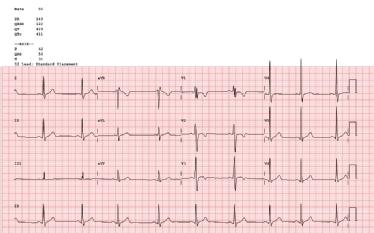References
1. Marcus F, McKenna W, Sherrill D et al. Diagnosis of Arrhythmogenic Right Ventricular Cardiomyopathy/Dysplasia. Proposed Modification of the Task Force Criteria. Circulation. 121:1533-1541, 2016
2. Calore C, Zorzi A, Sheikh et al. Electrocardiographic anterior T-wave inversion in athletes of different ethnicities: differential diagnosis between athlete's heart and cardiomyopathy. Eur Heart J. 37:2515-2527, 2016
3. Zaidi A, Sheikh N, Jongman JK. Clinical differentiation between physiological remodelling and Arrhythmogenic Right Ventricular Cardiomyopathy in athletes with marked electrocardiographic repolarisation anomalies. JACC. 65:2702-2711, 2015.
4. Sharma S, Drezner J, Baggish A et al. International Recommendations for Electrocardiographic Interpretation in Athletes. JACC.
5. Papadakis M, Basavarajaiah S, Rawlins, J. Prevalence and significance of T wave inversions in predominantly Cacucasian adolescent athletes. Eur Heart J. 14: 1728-1735, 2009.
6. Migliore F, Zorzi A, Michieli P. Prevalence of cardiomyopathy in Italian asymptomatic children with electrocardiographic T wave inversion at pre participation screening. Circulation 12:529-38, 2012.
7. Papadakis M, Carre F, Kervio G et al. The prevalence, distribution, and clinical outcomes of electrocardiographic repolarization patterns in male athletes of African/Afro-Caribbean origin. Eur Heart J. 32:2304-2313, 2011
8. Brosnan M, La Gerche A, Kalman J et al. Comparison of frequency of significant electrocardiographic abnormalities in endurance versus non-endurance athletes. Am J Cardiol. 113: 1567-1573, 2014.
9. Malhotra A, Dhutia H, Gati S et al. Prevalence and significance of anterior T wave inversion in young white athletes and non-athletes. JACC. 69:1-9, 2016
10. Priori SG, Blomstrӧm-Lundqvist C, Mazzanti A et al. 2015 ESC guidelines for the management of patients with ventricular arrhythmias and the prevention of sudden cardiac death: The Task Force for the management of patients with ventricular arrhythmias and the prevention of Sudden Cardiac Death of the European Society of Cardiology (ESC). Eur Heart 36: 2793-2867, 2015
11. Papadakis M, Basavarajaiah S, Rawlins J et al. Prevalence and significance of T wave inversions in predominantly Caucasian adolescent athletes. Eur Heart J. 30:1728-1735, 2009.
12. Calo L, Sperandii F, Martino A et al. Echocardiographic findings in 2261 peri-pubertal athletes with or without inverted T waves at electrocardiogram. Heart. 101: 193-200, 2015.
13. Maron BJ. Sudden death in young athletes. N Engl J Med 2000;349:1064–75
14. Sarto P, Merlo L, Noventa D. Electrocardiographic changes associated with training and discontinuation of training in an athlete with hypertrophic cardiomyopathy. 93: 518-519, 2004.
15. Zorzi A, ElMaghawry M, Rigato I. Exercise-induced normalisation of right precordial negative T waves in arrhythmogenic right ventricular cardiomyopathy. Am J Cardiol. 112: 411-415, 2013.
16. Wilson MG, Sharma S, Carré F et al. Significance of deep T wave inversions in asymptomatic athletes with normal cardiovascular examinations: practical solutions for managing the diagnostic conundrum. Br J Sports Med. 46: 51-58, 2012.
17. Schnell F, Riding N, O’Hanlon R et al. Recognition and significance of pathological T wave inversions in athletes. Circulation. 131: 165-173, 2015.
18. Ackerman MJ, Priori SG, Willems S et al. HRS/EHRA expert consensus statement on the state of genetic testing for the channelopathies and cardiomyopathies. This document was developed as a partnership between the Heart Rhythm Society (HRS) and the European Heart Rhythm Association (EHRA). Heart Rhythm. 8:1308-39, 2011
19. Pelliccia A, Di Paolo FM, Quattrini FM et al. Outcomes in athletes with marked ECG repolarization abnormalities. N Engl J Med. 10:152-61, 2008.
20. Pelliccia A, Fagard R, Bjørnstad HH et al. Recommendations for competitive sports participation in athletes with cardiovascular disease: a consensus document from the Study Group of Sports Cardiology of the Working Group of Cardiac Rehabilitation and Exercise Physiology and the Working Group of Myocardial and Pericardial Diseases of the European Society of Cardiology. Eur Heart J. 26:1422-45, 2005
Notes to editor
Dr Joyee Basu, BMBCh, MA (Oxon), MRCP, CRY Cardiology Research Fellow, Cardiology Clinical Academic Group, St George’s, University of London, UK
Dr Michael Papadakis, MD, MRCP, FESC, Senior Lecturer in cardiology, Cardiology Clinical Academic Group, St George’s, University of London, UK
Dr Svetlana Pitman, St George’s, University of London, UK





 Our mission: To reduce the burden of cardiovascular disease.
Our mission: To reduce the burden of cardiovascular disease.